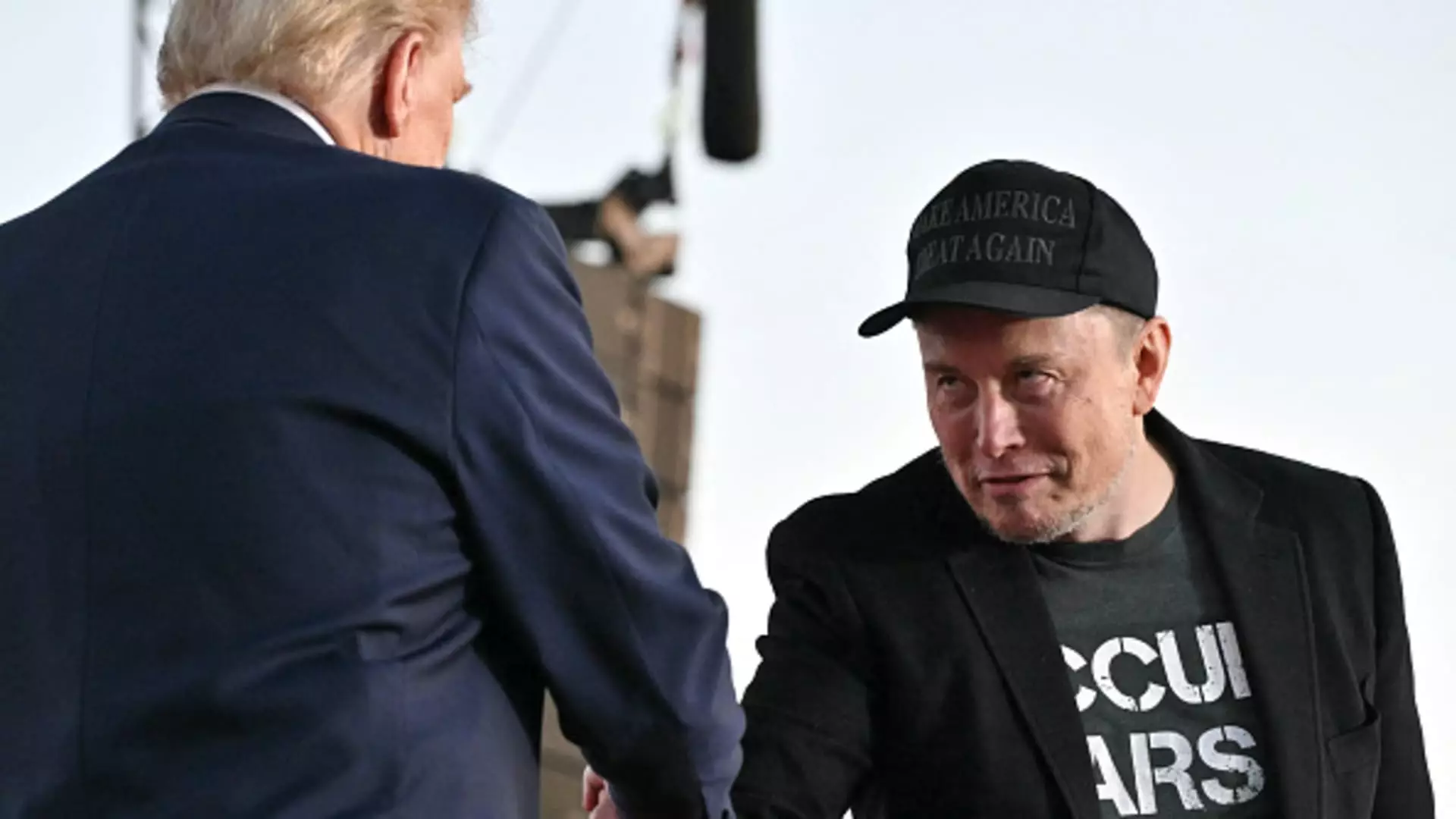As the transportation landscape evolves toward automation, the financial market’s response can often serve as a barometer for consumer and investor confidence. Recently, Tesla experienced a notable surge in its stock price, largely influenced by developments in the political sphere. This uptick brings to the forefront the intricate relationships between governmental policies, technological advances, and corporate ambitions in the realm of autonomous vehicles.
The Driving Force Behind Tesla’s Stock Surge
On a seemingly ordinary Monday, Tesla shares soared by nearly 8% in premarket trading, a reaction catalyzed by reports that President-elect Donald Trump’s transition team is prioritizing the establishment of a federal regulatory framework for self-driving vehicles. This initiative, aimed at streamlining regulatory pathways, could create substantial opportunities for Tesla, a company known for its ambitious goals regarding autonomous driving technology. The potential implications of such a regulatory environment could lift significant burdens on companies striving to implement self-driving capabilities.
While the report surfaced through unnamed sources, it underscores a pivotal moment for Tesla, particularly in light of Musk’s active role in advocating for Trump’s administration prior to the elections. Such political connections could yield favorable conditions for innovation and support the pace at which regulations adapt to technological advancements.
Throughout his tenure at the helm of Tesla, Elon Musk has maintained an unwavering commitment to advancing self-driving technology. The ambitious goal of creating a fleet of “robotaxis” signifies an extraordinary leap forward, positioning Tesla as a potential front-runner in the autonomous vehicle race. The recently showcased Cybercab—an innovative, steering-wheel-free vehicle—exemplifies this vision, though it remains to be seen how close the reality aligns with Musk’s ambitious pronouncements.
However, the path to achieving true autonomy is fraught with challenges. While Tesla has made significant strides with its Full Self-Driving (FSD) offering, current iterations still require human oversight. The promise that fully autonomous vehicles can hit the roads without human intervention remains unfulfilled, with competitors like Waymo already establishing a presence in this pioneering sphere. Musk’s projected timeline for widespread deployment in Texas and California next year may be optimistic, given past difficulties in realizing autonomous driving promised timelines.
The Role of Government and Policy in Self-Driving Technology
The national agenda surrounding autonomous vehicles is crucial for companies like Tesla. A consistent regulatory framework could eliminate some of the uncertainties that currently plague the industry. As reported, Trump’s transition team is meticulously seeking individuals with relevant experience, including former Uber executives and seasoned Republican lawmakers, to spearhead the Transportation Department’s efforts in this arena. Such appointments could radically benefit the industry by fostering an environment conducive to innovation.
However, a singular focus on deregulation may also raise concerns among safety advocates who warn against hastily implemented policies. The balance between advancing technology and ensuring public safety will be paramount as regulators navigate this uncharted territory.
As the narrative surrounding Tesla unfolds, the interplay between civic engagement, corporate strategy, and technological innovation will be critical. Musk’s ongoing relationship with government officials may position Tesla advantageously, yet it is essential to recognize that actual technological advancements will dictate the long-term success of autonomous vehicles.
Moreover, Tesla’s innovation pipeline must continue to outpace competitors while simultaneously meeting regulatory requirements to gain consumer trust. The future for Tesla and self-driving technology hangs in a delicate balance between governmental support, innovative breakthroughs, and public acceptance.
While the immediate stock market reaction signals optimism for Tesla amidst a potential policy shift, stakeholders should remain grounded in the realities of technological deployment. The road to autonomy is long, and the interplay between ambition and practicality will chart its course.


Leave a Reply